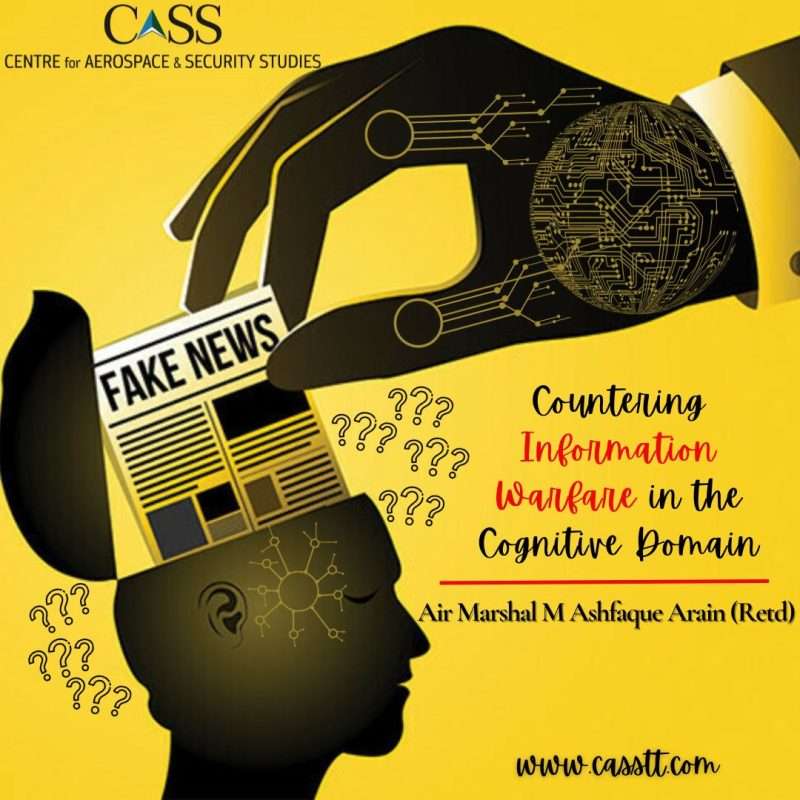Sun Tzu, the ancient Chinese military strategist, had long ago highlighted the significance of information warfare when he said, ‘all warfare is deception’. The term ‘Information Warfare’ entered military lexicon in the late ’70s, yet the strategy is as old as warfare itself. It has, however, continued to evolve with technological advancements.
Modern information warfare includes military deception, electronic warfare, psychological operations, and the management of information and operational security. In the 1991 Gulf War, information technology was crucial, enhancing battlefield intelligence, target selection, and command & control. This pivotal role of technology highlighted the significance of information dissemination over its creation, marking a paradigm shift in conflict engagement.
During that conflict, media management evolved significantly, refining the art of shaping public perception. The shift from misinformation, i.e., the inadvertent spread of false information, to disinformation, i.e., deliberate use of misleading information, marked a new era in strategic communication. This subtle change from ‘spin’ to ‘intentionally lying’, altered the nature of the government-military-media and public interface, aimed at aggressively using information as an asset.
Over time, combination of public relations techniques, social psychology theory, empirical research and public diplomacy techniques, all assisted by new technologies aimed at influencing people through deception, have helped mature ‘media wars’. Information superiority became a weapon to make the adversary believe what the deceiver wanted it to believe, obviously for the advantage of the deceiver and to the detriment of the deceived, turning perception into a battlefield where belief shapes reality. With information manipulation gaining significance, a new term ‘Information Operations’ was coined; relegating ‘Information Warfare’ to wartime situations.
Information operations are both offensive as well as defensive. Defensive operations include operations security and countering deception, propaganda, and psychological operations. Offensive operations include measures designed to mislead the enemy through manipulation, distortion, and falsification of evidence. Psychological operations, an important part of information operations, are aimed at influencing attitudes and behaviour of allies and enemies.
The digital revolution has further intensified competition in the information domain by allowing ‘many-to-many’ communication and radically increasing the flow of data. This transformation has helped increase the magnitude of traditional information operations and the size of the audience. In addition to targeting political and military leaderships, broader populations are also manipulated to influence national decisions.
The advent of social media platforms, AI-enhanced operations, and instantaneous communication has given birth to ‘Cognitive Warfare’. This strategy employs a cross-disciplinary method, combining cyber tactics, information operations, psychological manipulation, and social engineering with emerging technologies. The objective is to manipulate perception and decision-making processes, with the intent to weaken or incapacitate an opponent. Cognitive warfare seeks to sway mindsets and behaviour by targeting, influencing, protecting, and disrupting the very foundations of individual thought and group dynamics, all to secure a strategic upper hand.
While information operations rely on acting on the data that feeds cognition, cognitive warfare seeks to act on the process of cognition itself. The objective is to act not only on what individuals think, but also on the way they think, thus conditioning the way they act. In other words, it aims to hack the heuristics of the human brain in an attempt to ‘win the war before the war,’ making the human brain the battlefield of the 21st Century. The effort is carefully orchestrated to cloak the operation, concealing its mechanics not only from the intended targets but also from those tasked with its detection, mitigation, or counteraction.
India has, for a long time, been conducting information warfare against Pakistan. Over time, it has graduated to cognitive warfare with efforts dedicated on multiple fronts. It has been exploiting internal fault lines such as sectarian, linguistic, sub-nationalism, regionalism, and political polarisation etc. Internationally, India has been maligning Pakistan for terrorism and nuclear proliferation. Since successful execution of projects like the China-Pakistan Economic Corridor (CPEC) can bring economic revival in Pakistan, India exploits Western concerns about a rising China and links CPEC to military expansionism. It has been manipulating online platforms spread around the globe as discovered by the EU DisinfoLab. It is employing various social media platforms to spread fake or manipulated news to increase the divide within the Pakistani society and mislead the international community. The substantial representation of individuals of Indian origin in executive roles across social media companies is strategically leveraged to steer and shape narratives.
To counter such threats effectively, Pakistan must foster a ‘whole of society’ approach, engaging both domestic stakeholders and international allies similarly impacted. Given that decision-makers are products of society, the same tactics and susceptibilities affect both the public and official domains, including government and military leadership. Therefore, as a first step, improving the understanding of Cognitive Warfare should be a priority. Guarding against individual and collective cognitive dysfunctions, especially at the decision-making level through education and training is very important.
Fault lines and absence of credibility help false narratives. Therefore, in addition to reducing societal fault lines, the government and mainstream media must establish their credibility. The Armed Forces must judiciously blend human expertise with technology to retain decision-making clarity in intricate combat situations. Command structures need to be attuned to the cognitive aspects of warfare, ensuring a synergy between human judgement and machine precision. Protecting against cognitive attacks is vital, but developing capabilities for cognitive offensives is equally important. Above all, to secure victory in the information-centric battlespace, it is crucial to engage and align all stakeholders in a unified effort.
The author is a retired Air Marshal of the PAF who served as Pakistan’s Air Advisor at New Delhi from 2002-06, presently working as Advisor CAS and Director Technologies and International Coordination at the Centre for Aerospace & Security Studies, Islamabad, Pakistan. The article was first published in the Islamabad Post. He can be reached at [email protected]
Design Credit: Mysha Dua Salman





